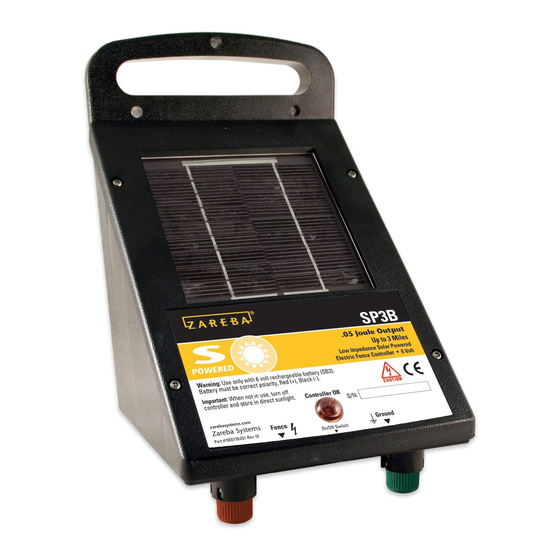
Table of Contents
Advertisement
USER'S MANUAL
For Solar-Powered Fence Controllers
Part I: Fence Controller Installation
Before You Start . . . . . . . . . . . . . . . . . . . . . . . . . . . p . 2
Fence Controller Installation . . . . . . . . . . . . . . . . . . . . . p . 4
. . . . . . . . . . . . . . . . . . . . . . . . p . 9
Operation SP10/LIS10 . . . . . . . . . . . . . . . . . . . . . . p . 10
Operation SP30 . . . . . . . . . . . . . . . . . . . . . . . . . . p . 11
Replacing battery . . . . . . . . . . . . . . . . . . . . . . . . . p . 12
Part II: Electric Fencing Basics
Electric Fencing Basics . . . . . . . . . . . . . . . . . . . p . 15
Electric Fence Components . . . . . . . . . . . . . . . . p . 16
Grounding System . . . . . . . . . . . . . . . . . . . . p . 18
Fence Posts . . . . . . . . . . . . . . . . . . . . . . . . p . 20
Insulators . . . . . . . . . . . . . . . . . . . . . . . . . p . 22
Fence Wire . . . . . . . . . . . . . . . . . . . . . . . . p . 23
Gate Openings . . . . . . . . . . . . . . . . . . . . . . p . 25
Lightning/Surge Protection . . . . . . . . . . . . . . . . p . 26
Electric Fence Design . . . . . . . . . . . . . . . . . . . p . 28
Testing/Troubleshooting . . . . . . . . . . . . . . . . . . p . 33
Fence Controller Warranty . . . . . . . . . . . . . . . . . p . 36
SAVE THESE INSTRUCTIONS
Advertisement
Table of Contents




Need help?
Do you have a question about the SP3 and is the answer not in the manual?
Questions and answers